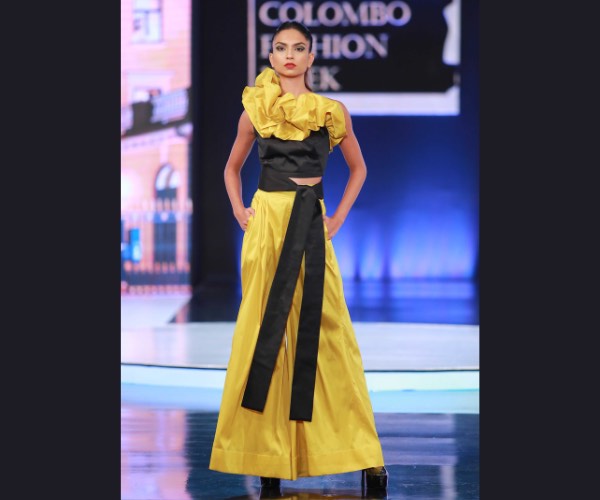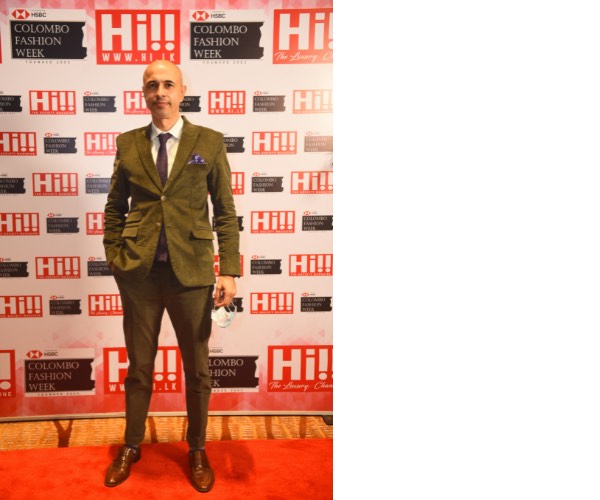
Mar 20 2023.
views 514


A deeply spiritual being, Ajai Vir Singh is one who does not embark on a venture lightly. His vision to elevate Sri Lanka’s standing in the global fashion arena is driven by his relentless passion not only for fashion but also as a payback to the country he now considers his home. Twenty years ago, Ajai presented the first edition of Colombo Fashion Week albeit then called Colombo Fashion Weekend. Since then, like a butterfly emerging from a chrysalis, CFW has undergone a metamorphosis and has emerged as a well-respected and renowned platform for Sri Lankan designers to showcase their collections.
With days to go before the presentation of this season’s shows, Ajai and Fazeena, the hands-on CEO of Colombo Fashion Week, took time to reflect on their past and also speak about their plans for the future of CFW.

Q When the notion of starting a fashion week in Sri Lanka back in 2003 came to your mind what vision did you have?
To be honest at that time it was “Just a Try”, more than anything else, an attempt with a question ‘Can this be done here?’ Can fashion be revived? Can the next generation be inspired to follow fashion? That was how it started.
Q What do you think sets Colombo Fashion Week apart from other international fashion weeks in the South Asian region?
CFW is a development platform, unlike other fashion weeks. It is completely invested in identifying new designers working with them providing resources, guidance and mentoring and then moving to presenting and promoting. A lot of knowledge infusion takes place on the platform. Secondly, it’s a hybrid format created during the last 20 years to suit Sri Lanka. It was effective for Sri Lanka, and over the years this format of presentation is being followed in India, Pakistan and Bangladesh too. When we started I knew the traditional fashion week system won’t work hence we had created a new one based on market conditions.
Q Tell us how fashion’s sustainability credentials in the Sri Lankan context have evolved since two decades ago?
Over the last five years, my conviction has only grown stronger that Sri Lankan designers can take the lead in South Asia by being the most sustainable. This can be our edge. We at CFW have created two important initiatives to push that.
A thought leadership platform called the Responsible Fashion Summit, and secondly a garment evaluation tool called Responsible Meter, which scores garments on a ten-point scoring system. This standard is one of its kind in the world. These kinds of initiatives equip and gear Sri Lankan designers to actively pursue the sustainability path. It keeps them empowered and creates a sustainable identity for the industry. This also synergises with the apparel industry too.
Q What initiatives at CFW do you run to ensure Sri Lanka keeps nurturing cutting-edge designer talent?
There are numerous initiatives. Emerging Designer Initiatives are our key focus, as they feed the fashion design industry. When we started, there was Yoland, others that you see on the platform were new, hence the new that you see today will be hopefully the known ones of tomorrow. I have personally seen all their journeys star. I remember their first meetings and where we met, to me that is a great encouragement for the platform. For the last 7-8 years Fazeena has been driving the Emerging Designer development with her team and you see the results of that. We started with CFW Day at Unis and design schools, followed by Project 7 (design development system)and then CFW Accelerate. This is the most comprehensive development programme especially in these tough times, supported by HSBC. Ideation, Collection planning, Presentation and Retail Exposure are where the focus is. We keep evolving the resource structure so new designers have the required support to excel.
Q What have been some of the highlights of the last twenty years?
There are so many highlights on this journey. This project of development has been a forerunner and there has been a constant learning process on the run. One of the key highlights would be that we were able to build pride in Sri Lankan fashion, making it a talking point for the fashion consumers here. This was not the case when we started. This to me was very important. This gave hope to the new generation to enter this creative industry. We knew it was a nascent industry and a lot of loose ends needed tightening and structure needed to be created, to foster the above. Today more than 80% of designers we see are products of the CFW design development system. Another highlight is that an eco-system for fashion has been created. The younger generation can hope to start their labels, and thinking of fashion at not difficult. Education, Retail, Designer development, Awareness of trends, Marketing, Show Presentation, Promotions, Collaborations etc are in place now.
Q To mark the 20th anniversary of CFW what are you hoping the designers will bring to the show?
Hoping to present the best of Sri Lankan fashion even in these interesting times, with the hope that things will only improve and a better environment is provided for creative industries. That design entrepreneurship will increase, and the brain drain will reverse. Even though it seems like a tall order, it's still quite achievable.
Often found working hard behind the scenes, Fazeena is the gel that binds the organisation together. Starting at the bottom of the ladder, and learning the ropes, Fazeena is now CEO of CFW. She credits this rise to her commitment and passion for the vision of CFW which keeps the torch burning for her. With her hands-on approach and no-nonsense attitude to work, Fazeena’s pet project is nurturing and guiding emerging designers under Ajai’s watchful gaze.

Q Within CFW your pet project is the emerging designer segment. How would you rate its success?
I see it as the engine that keeps the fashion design industry moving with the continuous emergence of new talent. From just a few designers entering the fashion space yearly to a platform that nurtures and funds new talent every year, I think it’s come a long way. The Emerging Designer Accelerate Programme is a multi-pronged mentorship platform along with funding support. It certainly has minimised the time it takes a young designer to enter the market and retail.
Q What areas within the Sri Lankan fashion ecosystem need further development and what part does CFW hope to play in that?
The responsible fashion aspect is a space that requires continuous improvement and knowledge. At CFW this is one of our core pillars and we have been leading the way for the fashion industry in SL to include this in their design thinking and development process. We have developed cutting-edge tools such as the responsible meter in this regard. We hope to bring in thought leadership in the subject matter and develop new ideas via technology to enhance such practices.
Q How do you and Ajai keep ensuring that the show stays relevant each season?
We have adopted a progressive vision and a commitment to the industry to move in a certain direction. Despite a civil war, a pandemic and an economic crisis this is one platform that has continued to deliver.
Q What do you say to critics who say that CFW has run its course?
Twenty years later, here we are .., with an industry and a brand that continues to grow despite the circumstances. That should speak for itself
Q Where do you see CFW in the next 5 years?
Creating commerce internationally for designers, and formulating exciting new verticals for the organisation!
0 Comments